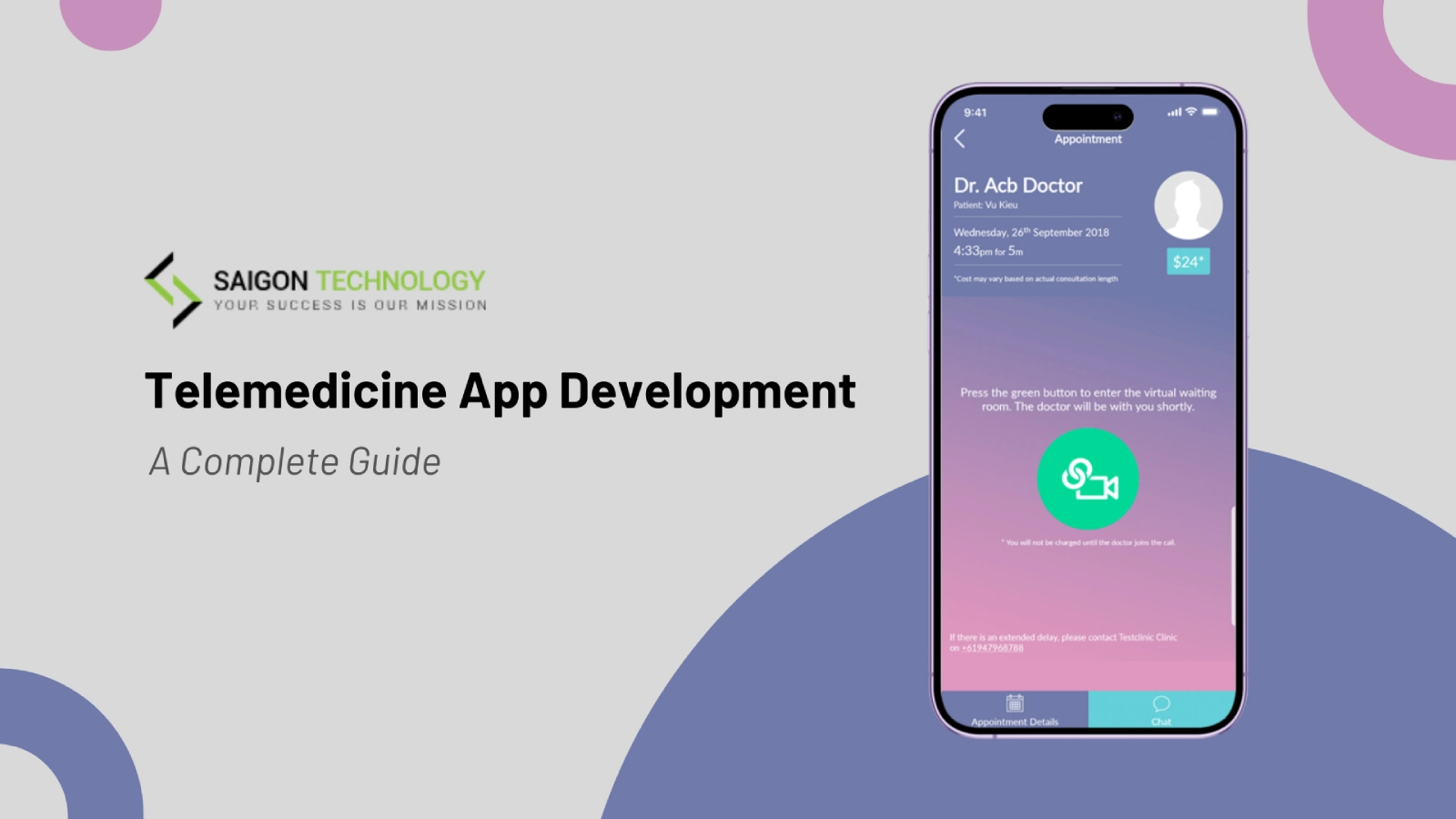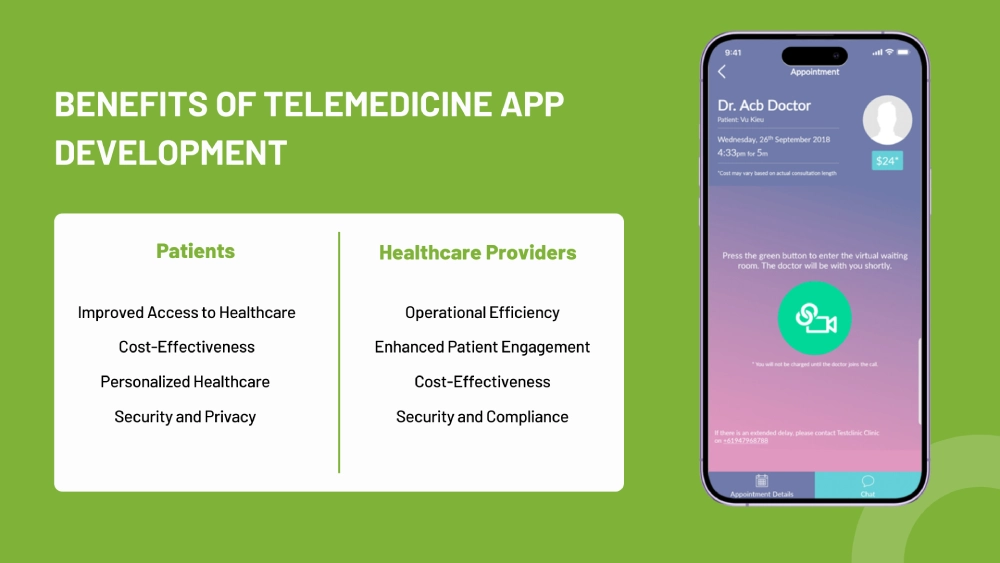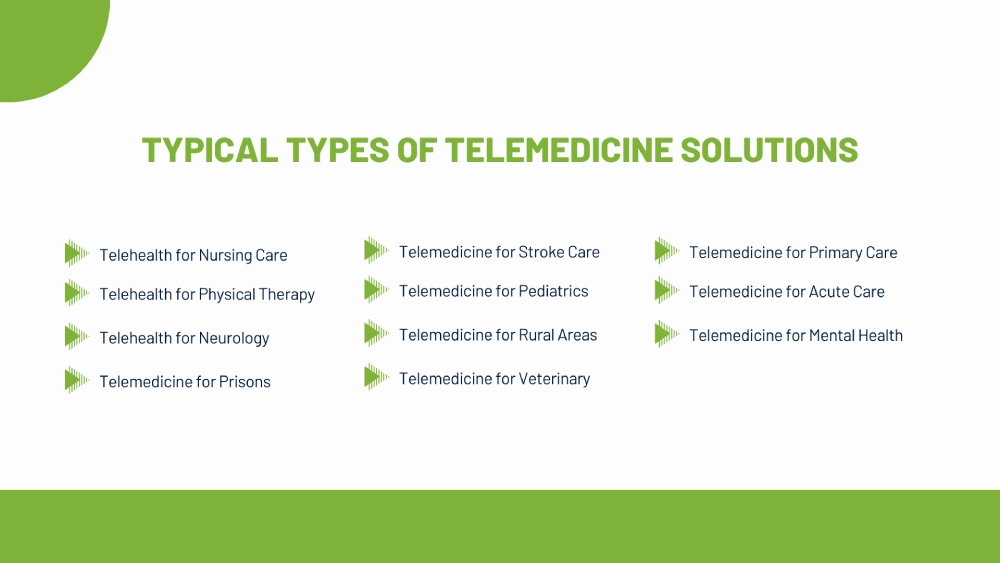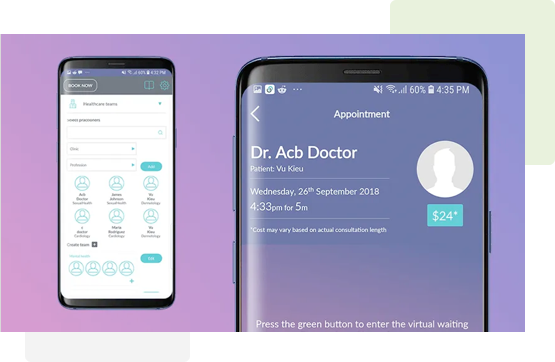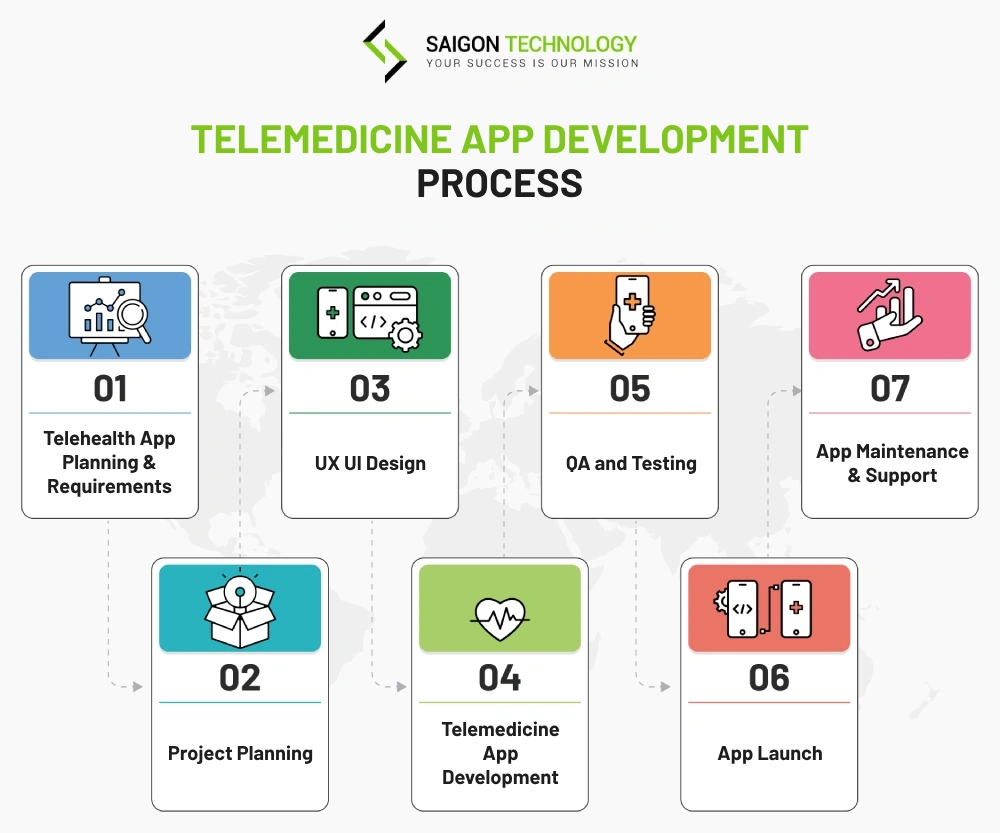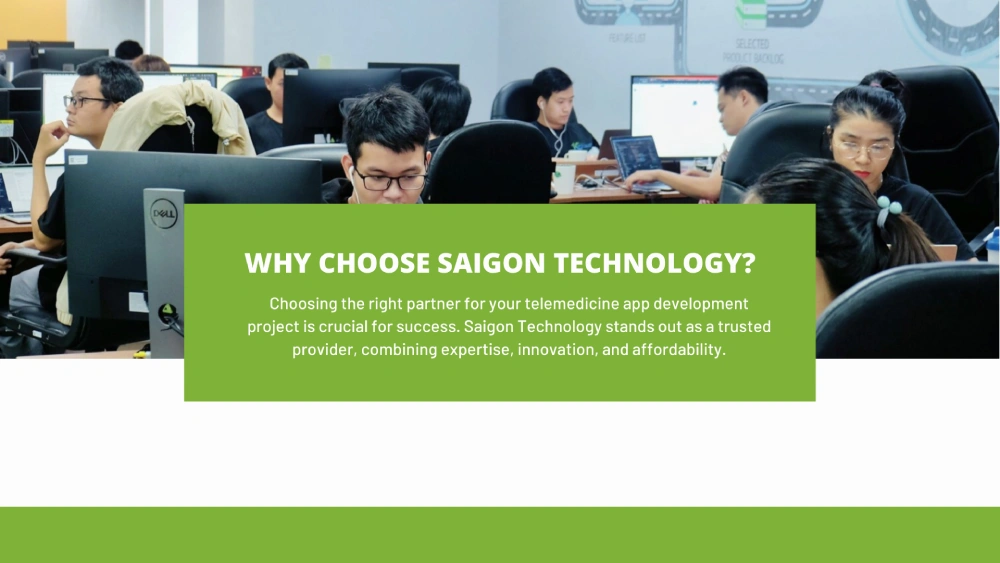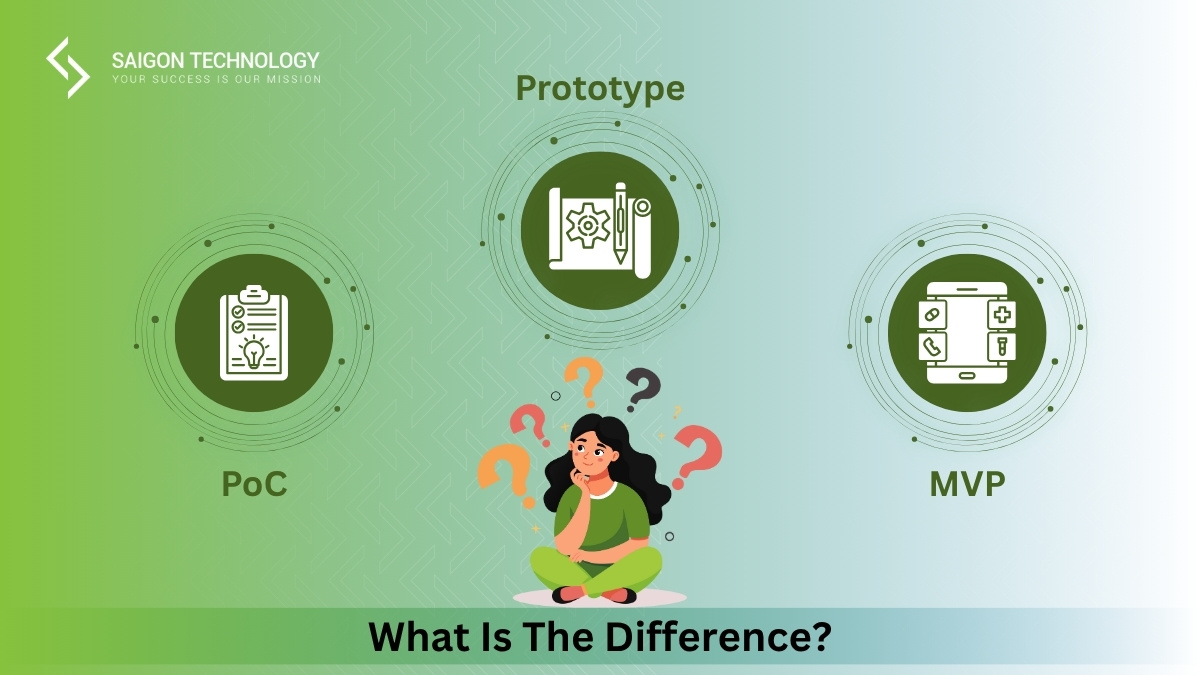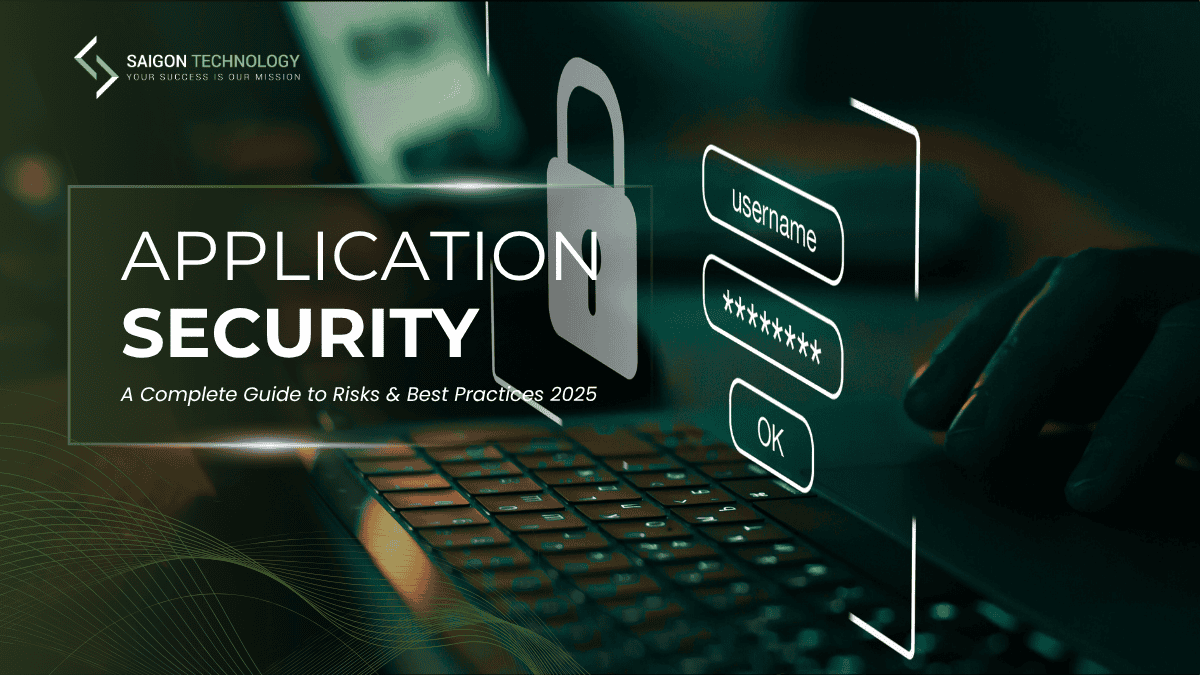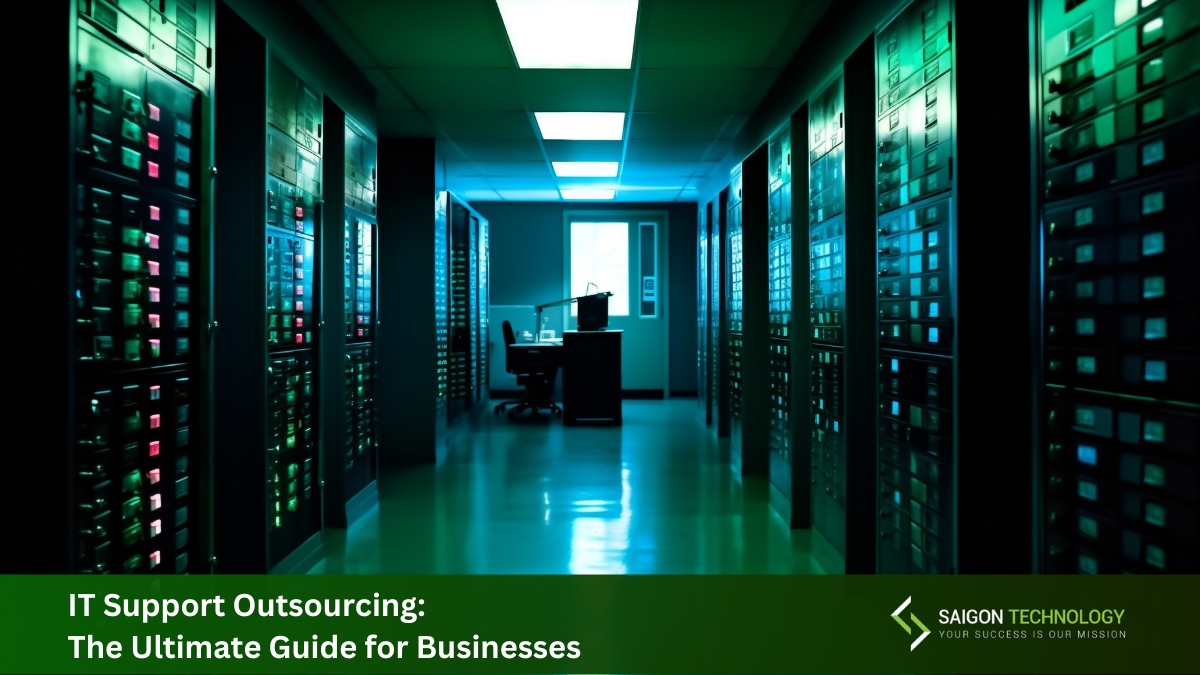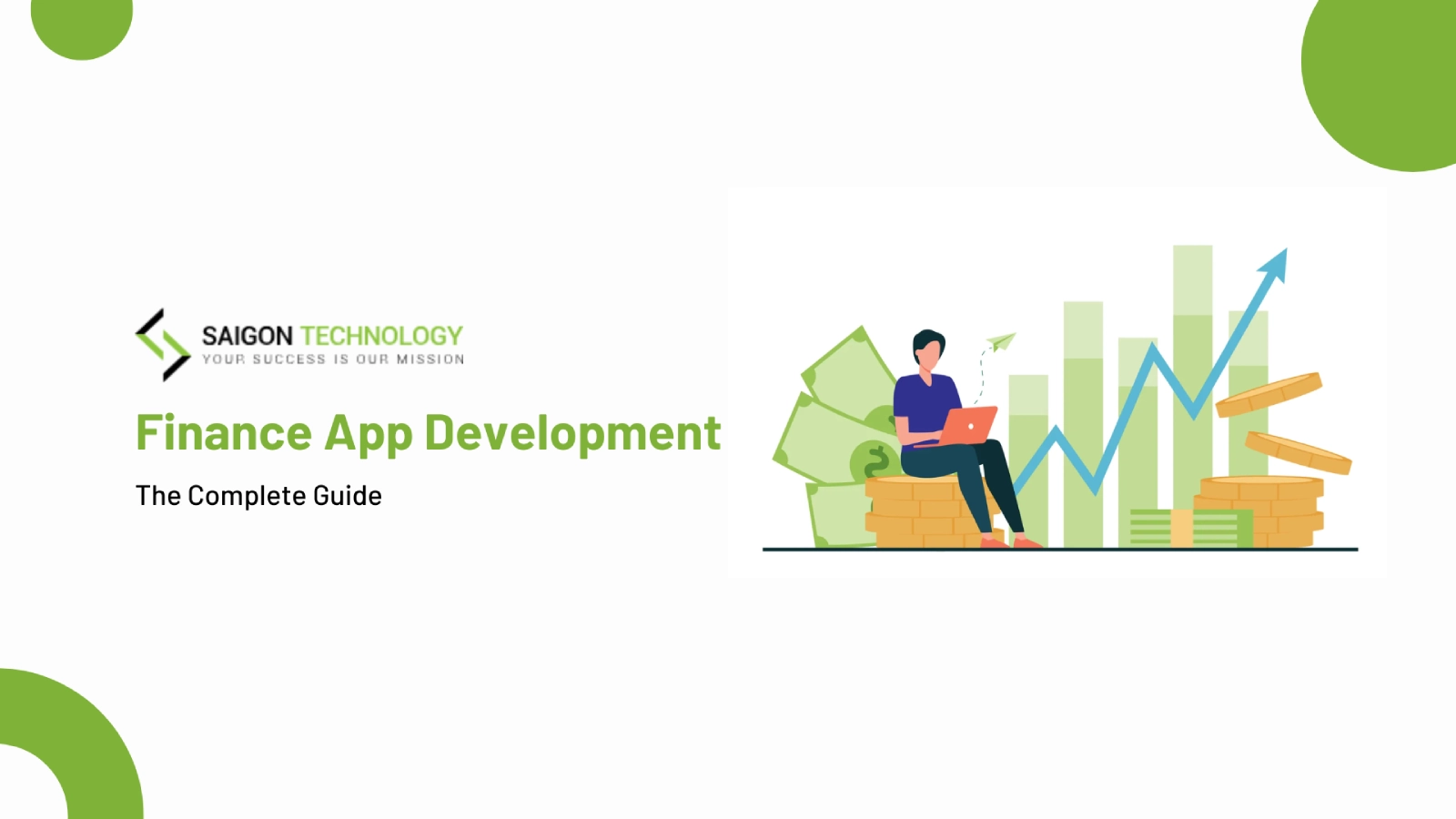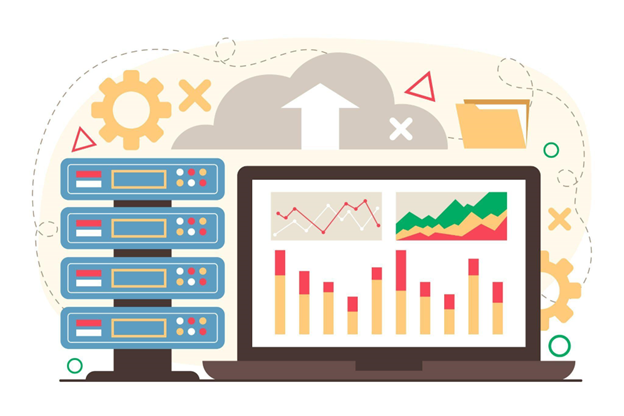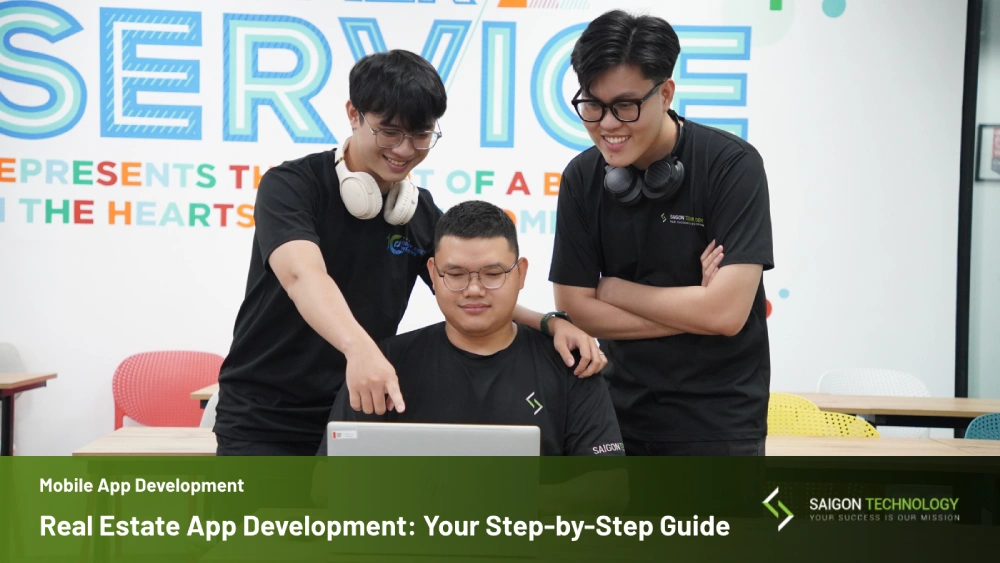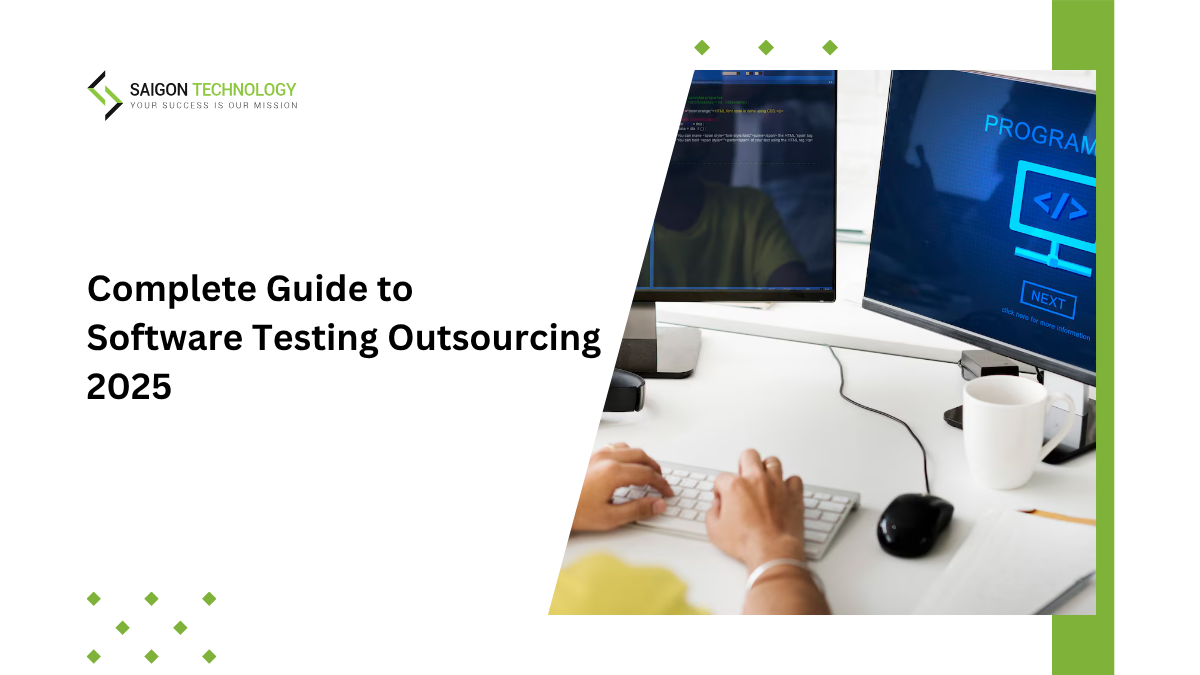Telemedicine app development is a significant and growing segment within the broader healthcare mobile app development market. It harnesses cutting-edge technology to deliver healthcare remotely, improving accessibility and bridging geographical gaps.
The COVID-19 pandemic dramatically accelerated the adoption of telemedicine, driven by the need for social distancing and safer consultations. Even as the immediate crisis has subsided, patient preference for virtual care for non-urgent medical needs remains strong. Global telemedicine user numbers continue to rise, projected to exceed 116 million in 2024.
This guide explores the transformative impact of telemedicine app development on the healthcare landscape. We’ll delve into the key benefits, present relevant statistics, and examine the exciting future potential of this technology. Furthermore, Saigon Technology will provide insights into how businesses can leverage these innovations to meet the burgeoning demand for convenient and effective virtual healthcare solutions.
What is Telemedicine App Development?
Telemedicine app development involves creating innovative software solutions that facilitate remote consultations and enhance patient care delivery. These apps integrate telehealth technology to ensure seamless communication between patients and healthcare providers.
Telemedicine applications enable remote patient monitoring, allowing healthcare professionals to track health data and provide timely interventions. By leveraging advanced tools, these apps optimize care for patients in urban and remote areas alike.
There are some benefits that we should consider when we think about telemedicine app development. Firstly, telemedicine reduces geographic barriers, ensuring individuals in rural areas can access vital medical services. It also enhances health outcomes via improving patient treatment plans and preventing complications. Furthermore, a telemedicine app either boosts patient engagement or streamlines routine operations.
By transforming healthcare delivery, telemedicine app development ensures improved access to care, better engagement, and operational efficiency for providers worldwide.
Telemedicine App Market Overview
The telemedicine industry has grown exponentially, with the COVID-19 pandemic accelerating its adoption worldwide. According to Grand View Research, the global telemedicine app market is projected to surpass $380.3 billion by 2030. This rapid expansion highlights the increasing reliance on telehealth app development solutions for remote patient care and chronic disease management.
A significant factor in this growth is telemedicine’s ability to bridge gaps in healthcare accessibility, particularly in underserved areas. The integration of telehealth technology for remote patient monitoring and virtual consultations has proven invaluable for patients with mobility issues or those residing in remote locations. Moreover, healthcare providers benefit from reduced operational costs and improved efficiency, showcasing telemedicine’s dual impact on the patient-provider relationship.
Key Growth Drivers in the Telemedicine Market
- Chronic Disease Management: With chronic illnesses on the rise, telemedicine apps empower patients by offering tools for tracking and managing their conditions in real-time.
- Cost-Effective Care Solutions: Rising traditional healthcare expenses have driven the demand for cost-efficient alternatives like telehealth apps, offering affordable and accessible healthcare services.
- Patient Acceptance Post-Pandemic: Surveys reveal that over 85% of patients reported satisfaction with virtual care, citing convenience and time savings. This shift highlights how telemedicine industry trends have normalized remote consultations as a standard healthcare practice.
Emerging Market Opportunities and Challenges
The global telemedicine app development market is rife with opportunities, particularly in regions with limited access to healthcare. Advancements in tele-home solutions are enhancing patient convenience, allowing individuals to receive care without leaving their homes. Additionally, telehealth app productization is enabling businesses to customize solutions for diverse healthcare needs, catering to niche audiences effectively.
However, challenges remain. Older populations, often the most frequent users of healthcare, face barriers in adopting telemedicine due to limited tech literacy or lack of internet connectivity. Addressing these challenges is vital to ensuring equitable access to telehealth services.
Data from the PMC study confirms that telemedicine has been instrumental in reducing healthcare disparities. The report highlights its role in delivering preventive care, managing acute conditions, and facilitating mental health services. It also emphasizes telemedicine’s potential to alleviate strain on healthcare infrastructure by reducing patient inflow into physical facilities.
As the global telemedicine market continues to expand, focus areas include:
- AI-Driven Insights: Integrating artificial intelligence to enhance diagnosis accuracy and patient outcomes.
- Personalized Healthcare: Tailored telehealth solutions addressing individual patient needs and preferences.
- Emerging Markets: Increasing telemedicine adoption in low- and middle-income regions with government and private-sector investment.
The future of telemedicine is bright, with its growth driven by technological advancements and a shift in patient attitudes. With the right strategies, businesses can harness telemedicine software solutions to revolutionize healthcare delivery.
Benefits of Telemedicine App Development for Patients and Healthcare Providers
We know several significant benefits about the telemedicine app development in daily posts. By the way, to have a deep understanding of each advantage, please have a look below:
Benefits for Patients
1. Improved Access to Healthcare
Telemedicine apps break down barriers, enabling patients in remote or rural areas to access quality healthcare services. With features like appointment scheduling and video consultations, patients can consult doctors without the need to travel. This ensures underserved communities receive timely medical care.
Telemedicine apps also provide unmatched convenience. Patients can book appointments, attend virtual consultations, and receive prescriptions—all from the comfort of their homes. These apps eliminate waiting room times, streamlining the patient journey.
2. Cost-Effectiveness
Virtual consultations reduce the cost of transportation and eliminate the need for frequent in-person visits, saving both time and money. This affordability makes healthcare accessible to a wider audience, particularly those seeking cost-effective options.
Additionally, telemedicine platforms lower the overall costs of treatment by minimizing unnecessary hospital visits and offering competitive pricing for services. The ability to access affordable care empowers patients to prioritize their health.
3. Personalized Healthcare
Telemedicine apps enable remote monitoring of patients with chronic diseases, allowing real-time tracking of vital signs and symptoms. This fosters better disease management and helps prevent complications.
Using AI-driven analysis, these apps analyze patient data to provide tailored recommendations and predict potential health outcomes. Personalized healthcare plans enhance patient satisfaction and improve treatment effectiveness.
4. Security and Privacy
Data protection is a top priority for telemedicine. Advanced encryption methods and HIPAA-compliant systems ensure the confidentiality of sensitive patient information. Patients can trust telemedicine apps to safeguard their medical history.
These platforms adhere to stringent regulatory standards, ensuring that patient data remains secure during storage and transmission. This focus on security builds trust and encourages adoption among users.
Benefits for Healthcare Providers
1. Operational Efficiency
By reducing the need for physical infrastructure, telemedicine apps cut operational costs for healthcare providers. Clinics can manage more consultations virtually, saving time and optimizing resources.
Providers also benefit from automated workflows, such as streamlined appointment booking and digital patient records. This increases efficiency and allows medical professionals to focus on patient care rather than administrative tasks.
2. Enhanced Patient Engagement
Real-time access to patient records enables healthcare providers to create personalized treatment plans. This fosters better communication between doctors and patients, improving satisfaction and outcomes.
Continuous monitoring and follow-up care through telemedicine platforms ensure patients remain engaged in their health journeys. This proactive approach leads to more positive health results.
3. Cost-Effectiveness
Healthcare providers save money by reducing the need for large office spaces and physical equipment. This translates to lower overhead costs and more affordable care delivery.
Efficient resource allocation, such as assigning medical professionals based on demand, minimizes wastage and enhances productivity. Telemedicine apps also facilitate better time management for providers.
4. Security and Compliance
HIPAA compliance ensures that patient data is securely stored and transmitted, meeting regulatory requirements. This guarantees privacy and builds confidence among providers and patients.
Encrypted video conferencing solutions safeguard virtual consultations, ensuring secure communication. Providers can offer services with the assurance that all interactions remain confidential and protected.
Typical Types of Telemedicine Solutions
When we think about the application of telemedicine solutions, we should be clear about the applications of telemedicine in many fields. Here are some typical types of telemedicine solutions we often see.
1. Telehealth for Nursing Care
Telemedicine apps enhance nursing care by enabling remote consultations, health monitoring, and patient education. These tools allow nurses to provide continuous support, improving patient outcomes and satisfaction.
2. Telehealth for Physical Therapy
Patients undergoing physical therapy benefit from virtual sessions, which provide progress tracking and customized rehabilitation plans. This accessibility allows patients to recover effectively without the constraints of regular clinic visits.
3. Telehealth for Neurology
Neurologists leverage telemedicine for virtual consultations, remote symptom monitoring, and diagnostics. These capabilities ensure timely intervention for conditions requiring specialized care, such as epilepsy or migraines.
4. Telemedicine for Stroke Care
Remote evaluations and timely interventions through telemedicine apps significantly improve stroke recovery outcomes. These solutions enable early diagnosis, rehabilitation planning, and consistent follow-up care.
5. Telemedicine for Pediatrics
Telemedicine apps support pediatric care by offering remote consultations and health monitoring for children. Parents can conveniently access medical advice and ensure their children receive timely care.
6. Telemedicine for Rural Areas
Telemedicine bridges healthcare gaps in rural and underserved regions, providing remote diagnostics and consultations. This access ensures equitable care for populations previously disadvantaged by geographical barriers.
7. Telemedicine for Primary Care
Routine check-ups, chronic disease management, and follow-ups are made more efficient through telemedicine, improving patient compliance and satisfaction.
8. Telemedicine for Acute Care
Timely remote assessments and access to specialists improve the quality of acute care, particularly in emergency scenarios.
9. Telemedicine for Mental Health
Telemedicine facilitates virtual therapy sessions and mental health monitoring, reducing stigma and increasing access to mental health services.
10. Telemedicine for Prisons
Incarcerated individuals benefit from remote consultations, ensuring timely healthcare access and reducing logistical challenges for prison authorities.
11. Telemedicine for Veterinary
Pet owners use telemedicine to access virtual consultations and health monitoring for their animals. This approach simplifies veterinary care and ensures pets receive timely attention.
Features of a Successful Telemedicine App
Successful telemedicine applications require essential features to offer a secure, efficient, and user-friendly experience. They help healthcare providers and patients connect remotely, making healthcare accessible and personalized. Below, we explore the critical elements of effective telemedicine application development.
Visit Scheduling
Efficient visit scheduling is fundamental for a telemedicine app’s success.
- Online Appointment Booking: Patients can schedule appointments at their convenience without waiting for phone or in-person booking. This feature integrates with clinic calendars and doctor availability for real-time updates, minimizing double bookings.
- Reminders: Automated notifications via email, SMS, or app alerts help reduce missed appointments. This also improves clinic efficiency and ensures better patient outcomes by encouraging timely follow-ups.
Advanced scheduling systems save time for both patients and providers, enhancing operational efficiency and overall satisfaction.
Communication Tools
Effective communication tools are the backbone of any telemedicine platform, ensuring seamless interaction between patients and healthcare providers.
- Secure Video Consultations: High-quality video calls bridge the gap between physical and virtual healthcare. Patients and doctors can interact face-to-face, making remote consultations feel personal and effective.
- Messaging: Encrypted messaging allows patients to ask questions, share updates, or clarify treatment plans. Providers can use this feature for follow-ups or sending post-consultation care instructions.
- File Sharing: Patients can upload and share medical records, diagnostic images, or test results directly with their doctors. This ensures quick decision-making and a smoother diagnosis process.
These communication features foster trust and improve the overall quality of care.
Treatment Planning
Comprehensive treatment planning tools are essential to deliver personalized care through a telemedicine app.
- Access to Medical Records: Real-time access to patient medical histories enables doctors to make informed treatment decisions. This minimizes errors and ensures continuity of care.
- Templates and E-Prescriptions: Pre-designed templates for common illnesses and digital prescriptions save time for doctors. Patients can receive prescriptions instantly and use them for online pharmacy orders or in-person pickups.
Treatment planning tools simplify processes, making healthcare more efficient and convenient for both parties.
Disease Management
Chronic and acute disease management becomes more effective with real-time tracking and monitoring.
- Symptom Tracking: Patients can log symptoms daily or as needed, allowing doctors to identify patterns and adjust treatments proactively.
- Remote Monitoring: Integration with wearable devices enables continuous tracking of vital signs like heart rate, blood pressure, and oxygen levels. This data is shared with healthcare providers for timely interventions.
These features empower patients to actively participate in their care and enable providers to deliver proactive, personalized healthcare.
Analytics and Reporting
Data-driven insights are a game-changer for modern telemedicine applications.
- AI-Driven Dashboards: Custom dashboards provide healthcare providers with actionable data, such as patient trends and treatment outcomes. This helps in better resource allocation and care prioritization.
- Predictive Analysis: Advanced algorithms analyze patient data to forecast health risks, recommend preventive measures, and optimize treatments.
Analytics tools not only enhance decision-making but also improve patient outcomes by enabling targeted interventions.
Billing and Insurance Integration
Streamlined billing and insurance processes are crucial for creating a hassle-free patient experience.
- Payment Integration: Telemedicine apps support various payment methods, such as credit cards, mobile wallets, or direct bank transfers, ensuring secure transactions.
- Insurance Verification: Real-time eligibility checks simplify insurance claims processing and ensure patients are aware of coverage options before consultations.
These integrations improve financial transparency and reduce administrative burdens for both patients and providers.
Security and Compliance
Security and compliance are non-negotiable aspects of any healthcare application.
- Data Encryption: Patient data is encrypted during storage and transmission, ensuring it remains confidential and secure.
- Compliance: Telemedicine apps adhere to stringent regulations like HIPAA, GDPR, and FHIR, ensuring patient trust and data privacy.
- Secure User Authentication: Multi-factor authentication (MFA) adds an extra layer of protection, safeguarding sensitive patient information from unauthorized access.
By prioritizing security, telemedicine platforms build trust and reliability among users.
Examples of Telemedicine App Development
Several successful telemedicine applications demonstrate how innovative features and technologies can transform healthcare. Below are notable case studies showcasing the potential of telemedicine app development.
Welio: A Successful Telemedicine App by Saigon Technology
Welio is a cutting-edge, on-demand doctor app designed to enhance patient engagement and streamline healthcare services.
- Features: Welio enables online appointment booking, secure video consultations, messaging, and digital prescriptions. It also integrates billing and insurance processing for a comprehensive user experience.
- Technologies: This telemedicine app was built using modern technologies, including Microsoft Azure, Swift 2, a .NET backend, Twilio SMS service and others. These technologies contribute to the app’s scalability, user-friendliness, and compliance with global healthcare standards.
- Benefits: Welio helps deliver a robust telemedicine solution that improves patient access and operational efficiency.
Sutter Health
Sutter Health’s telemedicine platform redefines primary care with a virtual-first approach.
- Features: The platform supports virtual check-ups, chronic disease management, and real-time health monitoring, ensuring holistic care for patients.
- Technologies: Leveraging cloud-based infrastructure, the app offers seamless performance, robust security, and high availability.
- Benefits: The solution reduced patient wait times, increased access to care in underserved areas, and optimized resource allocation.
Learn more about Sutter Health
Eagle Telemedicine
Eagle Telemedicine empowers hospitals to manage patient surges and rising operational costs through its innovative platform.
- Features: Real-time remote monitoring, predictive analytics, and secure communication tools enhance patient care and operational efficiency.
- Technologies: The app employs advanced encryption protocols and compliance measures to ensure data security and privacy.
- Benefits: Hospitals reported reduced overhead costs, improved patient outcomes, and better resource management by adopting this solution.
Telemedicine App Development Process: Step-by-step
Telemedicine app development involves a strategic and detailed process to ensure effective and compliant healthcare solutions. Here are the steps which businesses can take to meet patient needs while following healthcare regulations.
1. Telehealth App Planning and Requirements
The foundation of telemedicine app development starts with detailed requirements engineering and comprehensive software planning.
- Market and Competitor Research: Analyzing competitors, identing target audiences, and strategizing product to meet things which users need.
- Needs Specification: Clearly outline the healthcare organization’s requirements and gather insights to determine critical app functionalities.
- Feature Prioritization: Core features like symptom-based doctor search, real-time video communication, and appointment scheduling must be prioritized.
- Compliance Requirements: Ensure adherence to standards like HIPAA and HITECH to secure sensitive patient data.
- Integration Design: Plan seamless integrations with systems such as EHRs, health information exchanges (HIEs), and other medical platforms.
- Preliminary Architecture and Tech Stack: Develop a high-level architecture and select a tech stack that supports scalability and security.
- Customizations Design: Define options for modifying app modules, especially for enterprise-grade telemedicine solutions.
- Budget Planning: Estimate the project’s budget early to align with the development goals.
Duration: Approximately 4 weeks.
2. Project Planning
Effective project planning is vital for delivering a successful telemedicine app.
- Scope Identification: Define the project’s goals, deliverables, and boundaries.
- App Development Lifecycle Planning: Choose the appropriate software development lifecycle model, such as Agile methodologies, to ensure iterative improvements.
- Budget and Schedule Planning: Establish a detailed budget, timeline, and KPIs for tracking project progress.
- Risk Assessment and Mitigation: Identify potential risks, such as delays or compliance issues, and develop contingency plans.
- Usage Risks and Mitigation: Address app development challenges like user adoption and ensure safe usage for patients and providers.
Duration: Approximately 2 weeks.
Roles involved in this step: Project managers coordinate activities, business analysts assess resources, and developers contribute to technical planning.
3. UX and UI Design
Crafting a user-centric UI UX design ensures the app is intuitive and engaging for patients and healthcare providers.
- UX Design: Identify user scenarios, such as video appointment scheduling, and map out patient and provider journeys.
- UI Prototyping: Visualize the app’s design through wireframes to refine navigation and layouts.
- UI Design: Develop attractive, functional graphical elements for a seamless interface.
- Deliverables: Final outputs include UX wireframes and a detailed UI design document.
Duration: From 2 weeks.
Roles Involved: UI/UX designers lead the process, supported by project managers to align design goals with development milestones.
4. Telemedicine App Development
This phase involves building the app’s technical foundation and implementing essential features.
- Back-End and Front-End Development: Developers build the server-side architecture and user-facing elements for smooth functionality.
- Feature Development: Core features such as video calls, messaging, e-prescriptions, and third-party API integrations are implemented.
- Integration of Third-Party APIs: Services like payment gateways and insurance provider APIs are seamlessly incorporated.
Duration: 2 to 6+ months, using Agile development for iterative delivery.
Roles Involved: Developers handle coding, project managers ensure timely progress, and DevOps engineers manage deployment pipelines.
5. QA and Testing
Quality assurance ensures the app is functional, secure, and compliant with healthcare regulations.
- Functional Testing: Verifies that features like appointment scheduling and video calls work as intended.
- Usability Testing: Assesses the app’s ease of use for all stakeholders.
- Integration Testing: Ensures seamless communication between different app components and external systems.
- Security Testing: Conducts penetration tests and verifies HIPAA compliance to protect sensitive patient data.
- Performance and Load Testing: Tests app stability under high user traffic.
- Bug Fixing and Optimizations: Identifies and resolves errors to ensure a smooth user experience.
Duration: Continuous throughout development.
Roles Involved: QA engineers conduct tests, project managers oversee processes, and developers fix identified issues.
6. App Launch
Launching a telemedicine app requires a phased approach to ensure success.
- Pilot Roll-Out: Test the app with a focus group to gather early feedback and make necessary adjustments.
- MVP Launch: Release a minimum viable product with core features to validate market demand.
- Market Validation: Use feedback from early users to refine the app before full-scale deployment.
Duration: 1–2 months.
Roles Involved: Project managers oversee deployment, developers address feedback, and DevOps engineers manage production environments.
7. Telemedicine App Maintenance and Support
Ongoing maintenance ensures the app remains functional, secure, and adaptable to user needs.
- Ongoing Support: Provide continuous technical support to address issues and updates.
- Security Audits: Regular audits maintain HIPAA compliance and protect patient health information (PHI).
- Software Evolution: Introduce new features and upgrades based on feedback from users and stakeholders.
Duration: Continuous.
Roles Involved: Developers maintain features, QA engineers test updates, and DevOps engineers ensure infrastructure stability.
By following these steps, businesses can successfully navigate the telemedicine app development process, delivering secure, user-friendly solutions for modern healthcare.
Now that we’ve covered the development process, let’s explore how telemedicine apps can generate revenue.
Monetization Strategies for Telemedicine Apps
Telemedicine application software development provides innovative solutions for healthcare providers while enabling revenue generation through diverse monetization models. Below are effective strategies tailored to various business needs.
Pay-Per-Appointment
The pay-per-appointment model is one of the most straightforward revenue-generating approaches for telemedicine apps.
- Users pay a one-time fee for each consultation with a healthcare professional, ensuring transparency and flexibility.
- A portion of the fee is retained by the app provider as revenue, while the rest goes to the practitioner.
- Fees may vary depending on the type of appointment (e.g., general consultation, specialist consultation) or the qualifications of the healthcare provider.
- This model is particularly effective for apps targeting users seeking occasional medical advice without long-term commitments.
This approach provides immediate income while allowing users to pay only for the services they need.
Subscription-Based Approach
A subscription-based approach is a popular and reliable revenue model for telemedicine platforms.
- Users pay a recurring fee to access the platform’s telemedicine services. Subscriptions can be structured as weekly, monthly, or annually, offering flexibility for different budgets.
- Platforms can offer tiered plans, such as basic, premium, or enterprise packages, to cater to various user needs.
- Free trials can be included to attract users and encourage them to explore the platform’s value before committing.
- Integration with multiple payment gateways ensures smooth and secure transactions for customers worldwide.
This model creates a steady revenue stream and fosters long-term customer relationships, particularly for apps targeting chronic disease management or regular follow-ups.
Transaction Fee Model
The transaction fee model generates consistent income by charging users for specific actions performed within the telemedicine app.
- A small fee is applied to each completed transaction, such as booking a virtual consultation or purchasing a healthcare product.
- This model directly ties revenue to the platform’s usage, making it highly scalable as the user base grows.
- For example, if a consultation costs $50, the platform may retain 10%, earning $5 per transaction.
- It aligns well with platforms focusing on e-commerce integration, enabling users to purchase health-related items such as medications or wellness products.
By combining transparency and scalability, this model is ideal for startups and established platforms alike.
In-App Advertising
In-app advertising can serve as a supplementary revenue source for telemedicine applications with a large user base.
- Advertisers pay the platform to display targeted ads for healthcare products, wellness services, or insurance plans.
- Ads can appear as banners, pop-ups, or sponsored content, depending on the app’s design and user preferences.
- To ensure user engagement, advertisements can be tailored to their health interests or recent consultations.
- This model works best for free telemedicine apps, where the app’s primary revenue comes from advertising.
By monetizing user traffic through relevant ads, app owners can balance accessibility and profitability while maintaining high-quality user experiences. While monetization strategies are essential for long-term success, initial investment is a key consideration. Let’s now turn our attention to the cost factors associated with developing a telemedicine app, helping you plan for a strong return on investment.
Cost of Developing a Telemedicine App
The rise of telemedicine has opened doors to more accessible and convenient healthcare. But bringing a virtual care vision to life requires careful planning, especially when it comes to budgeting. Developing a telemedicine app is an investment, and understanding the factors that influence its cost is crucial for success. Let’s explore what contributes to the price tag of your future telemedicine platform.
What Factors Affect Telemedicine App Development Cost?
Several key elements play a role in determining the final cost of your telemedicine app. Think of them as the building blocks of your virtual clinic, each with its own associated expenses:
Platform and Reach
Will your app live on the web, mobile devices (iOS, Android, or both), or desktops? Native app development (designed specifically for one platform) offers optimal performance but can double development time and cost. Alternatively, cross-platform solutions, using cross-platform app development frameworks like Flutter or React Native, offer a balance between reach and budget. A fully functional app can range from $75,000 to $250,000 or more, depending on your choices here.
App Features: The Heart of Your App
What will your app do? Essential features like appointment scheduling, video consultations, secure messaging, and digital prescriptions are foundational. But consider the added value of remote patient monitoring, AI-powered diagnostics, or integration with Electronic Health Records (EHR). Each feature adds complexity and, naturally, cost. Custom features, like real-time analytics or blockchain security, can significantly impact the budget.
User Roles: Who’s Using Your App?
Telemedicine apps typically serve different users: patients, doctors, and administrators. Each role needs its own interface, authentication, and access privileges. This adds layers of design and development, increasing the overall cost. Robust role-based access control (RBAC) is essential for data security and HIPAA compliance, another important consideration.
Performance and Security: The Foundation of Trust
Users expect a smooth, reliable experience. This requires a robust backend, especially as your user base grows. Cloud services (like AWS or Google Cloud) offer scalability and compliance with regulations like GDPR and HITECH. Data encryption and secure storage are paramount, adding to the cost but ensuring trust and protecting sensitive information.
Integration: Connecting the Dots
Seamless integration with existing healthcare systems (EHR, LIS, PMS) enhances functionality and user experience. However, connecting with third-party APIs or legacy systems can introduce complexity and add to development time.
Monetization: Turning Vision into Value
How will your app generate revenue? Payment gateways are essential for pay-per-appointment or subscription models. Compliance with standards like PCI DSS is crucial for secure transactions, and this adds to the development cost.
Scalability: Planning for the Future
Your app should be able to grow with your vision. A scalable architecture allows for future expansion, including features like AI-driven analytics, wearable integrations, and real-time monitoring. Planning for scalability upfront can save money in the long run.
Development Team Location
Outsourcing app development, especially offshore app development, is a trending cost-reduction strategy. Choosing an offshore development team can significantly reduce costs without sacrificing quality. At Saigon Technology, we leverage the expertise of our offshore telehealth app developers to deliver cost-effective solutions. Our MVP-first approach allows you to test your app idea affordably, minimizing risk.
Read more: Explore How to Outsource App Development Effectively
Telemedicine App Development Cost Estimates: A Starting Point
While every project is unique, here are some general cost estimates:
- Basic App (Standard Features): $75,000 – $120,000
- Custom App (Advanced Integrations & Scalability): $150,000 – $250,000+
With a clearer understanding of the cost factors involved, let’s explore how leveraging expert services can streamline the development process and ensure a successful telemedicine app launch.
Leverage Expert Services for Telemedicine App Development
At Saigon Technology, we deliver end-to-end telemedicine app development solutions from consulting to modernization, ensuring your app meets user expectations and regulatory standards.
Telemedicine App Consulting
Effective telemedicine app consulting is critical to building apps that align with user demands and industry regulations.
- We analyze client requirements and define essential features, ensuring the app addresses specific healthcare challenges.
- Our experts recommend the ideal tech stack and design scalable, secure app architecture for seamless functionality.
- Advanced technologies like IoT, AI, and ML are integrated to optimize patient experiences and streamline operations.
- Guidance on healthcare compliance standards, including HIPAA and HITECH, ensures your app is regulatory-compliant.
- A robust telehealth app development strategy is devised, balancing innovation and user-centric design for maximum impact.
Our consulting services lay a solid foundation for telemedicine apps, ensuring technological and strategic excellence.
Custom Telemedicine App Development
With custom telemedicine app development, we deliver tailored solutions designed to meet unique healthcare needs and maximize user satisfaction.
- We gather detailed software requirements and craft a feature set aligned with client goals and patient needs.
- Our team designs intuitive UX/UI interfaces, enabling smooth navigation and a positive user experience.
- The apps undergo rigorous testing, ensuring they meet performance, security, and reliability standards.
- We implement third-party software integrations such as EHR and CRM, enhancing the app’s functionality and compatibility.
- After launch, ongoing maintenance and support ensure your app remains updated and operational.
Our custom telehealth software solutions empower healthcare providers with robust and efficient platforms.
Telemedicine App Modernization
Modernizing outdated apps is vital for enhancing usability and incorporating advanced features.
- We assess your current telemedicine app, identifying areas for improvement in performance, scalability, and design.
- The app architecture is restructured to support flexibility, ensuring it can adapt to future user demands.
- Redesigned UI/UX elements improve user engagement, offering a modern and appealing interface.
- We introduce advanced features like remote patient monitoring (RPM) and data analytics to drive better care delivery.
- Cutting-edge technologies such as speech recognition, blockchain storage, and interactive visualizations are integrated.
By modernizing your app, we ensure it stays relevant and continues to deliver value to users.
Why Choose Saigon Technology for Your Telemedicine App Development Project?
Choosing the right partner for your telemedicine app development project is crucial for success. Saigon Technology stands out as a trusted provider, combining expertise, innovation, and affordability.
Healthcare Expertise
We have extensive experience in telemedicine app development, including compliance with HIPAA, GDPR, and other healthcare regulations. Our solutions meet the highest standards of security and patient data protection.
Technological Excellence
Our team excels in integrating advanced technologies like AI, IoT, and cloud computing, ensuring your app is secure, scalable, and feature-rich. Blockchain integration enhances data security, while AI-powered tools improve diagnostics and patient engagement.
Custom Solutions
Our telemedicine app development company specializes in creating tailored solutions that align with specific client goals. Every app we develop includes future-ready features and adaptability to meet evolving healthcare demands.
Agile Approach
We follow agile methodologies for efficient project management, offering regular updates, transparency, and adaptability to changing requirements. This ensures a smooth development process and timely delivery.
Cost-Effective Solutions
With our offshore team, we provide high-quality telemedicine app development services at competitive pricing. This approach delivers significant savings while ensuring top-notch quality and performance.
Post-Launch Support
We offer comprehensive maintenance and update services post-launch, ensuring your app remains operational and secure over time.
Global Reputation
Recognized as a leading telemedicine app developers, we have a proven track record in delivering projects for clients across the US, UK, Australia, Singapore, and Germany.
Partner with Saigon Technology for innovative and cost-effective telemedicine app solutions. Contact us today to get a free quote!
FAQs
Which Are Technologies Used in Telemedicine App Development?
Telemedicine app development relies on a range of technologies to deliver secure, scalable, and user-friendly experiences. Key components include:
1. Cloud Platforms: AWS, Azure, Google Cloud, Digital Ocean
2. Backend Languages: .NET, Java, Python, Node.js, PHP, Golang
3. Frontend Technologies:
– Programming Languages: HTML5, CSS3, JavaScript
– Frameworks: React, Vue.js, Angular
4. Mobile Development Tools:
– Native: iOS, Android
– Cross-Platform: Flutter, React Native, Ionic, Xamarin, Cordova, PWA
5. Real-Time Communication: Twilio (video), Firebase (messaging)
How Does Saigon Technology Ensure the Quality and Security of Telemedicine Solutions?
At Saigon Technology, quality and security are top priorities in every telemedicine app development project. Our practices include:
- ISO Certifications: Compliance with ISO 9001 and ISO 27001 standards guarantees rigorous quality and information security management.
- Comprehensive Testing: Apps undergo extensive functional, performance, and security testing to identify and resolve vulnerabilities.
- Regulation Compliance: We adhere to global healthcare regulations, including HIPAA, HITECH, and GDPR, ensuring data protection and legal compliance.
- Cloud Infrastructure: Utilizing platforms like AWS and Google Cloud ensures scalable storage and advanced data encryption.
By prioritizing these elements, we deliver secure and compliant telemedicine solutions of the highest quality.
How to Develop a Telemedicine App?
Developing a telemedicine app requires a clear roadmap and adherence to healthcare standards. The key steps include:
1. App Planning
2. Project Planning
3. UX and UI Design
4. Telemedicine App Development
5. QA (Quality Assurance) and Testing
6. App Launch
7. App Maintenance and Support

